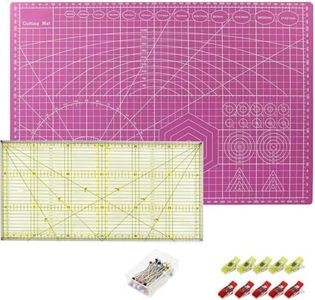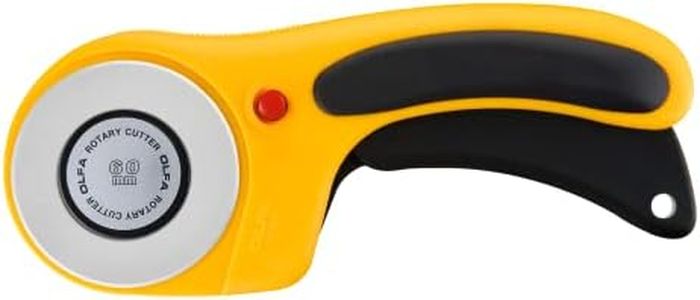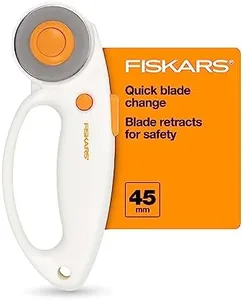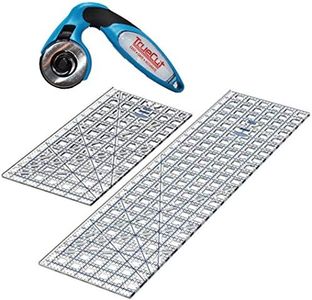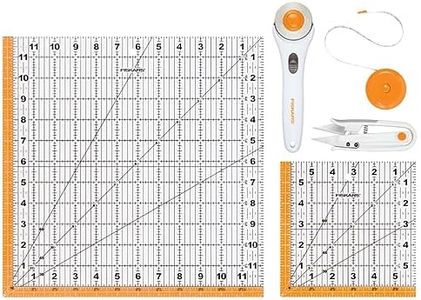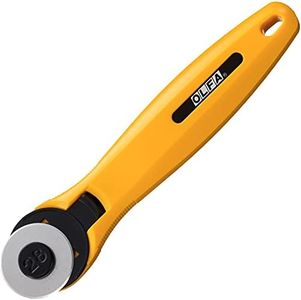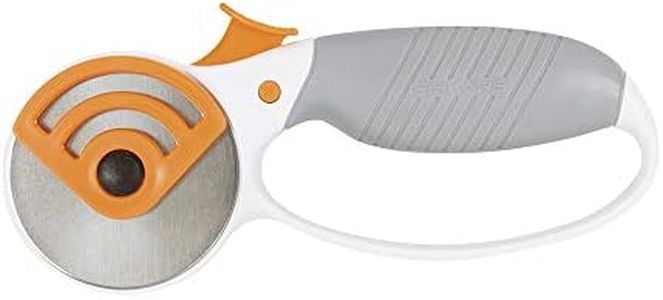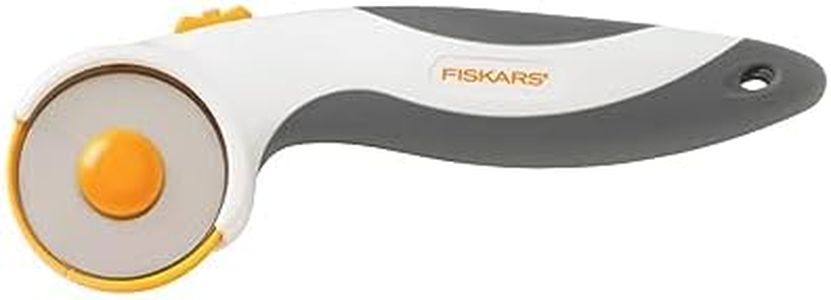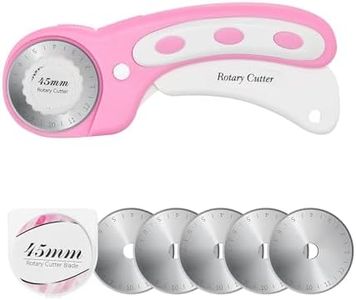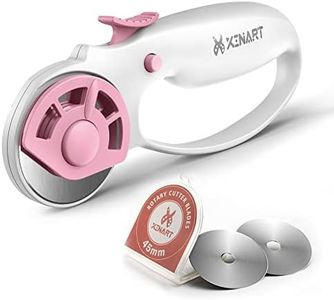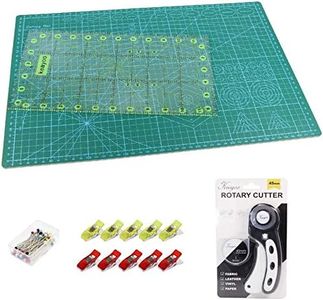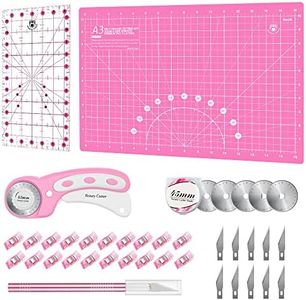We Use CookiesWe use cookies to enhance the security, performance,
functionality and for analytical and promotional activities. By continuing to browse this site you
are agreeing to our privacy policy
10 Best Quilting Rotary Cutters
From leading brands and best sellers available on the web.By clicking on a link to a third party's website, log data is shared with that third party.
Buying Guide for the Best Quilting Rotary Cutters
Choosing the right quilting rotary cutter can make a big difference in the accuracy, speed, and comfort of your quilting projects. Rotary cutters are essential tools for cutting fabric with straight, clean lines and can save you lots of time compared to scissors. When picking a rotary cutter, it’s important to understand the different features and how they align with your quilting habits and needs. Some cutters are easier to handle for large projects, while others are perfect for detail work or portability. Taking time to compare key specifications will help ensure you get a cutter that feels safe, comfortable, and efficient for your unique quilting routine.Blade SizeBlade size on a rotary cutter refers to the diameter of the circular blade, most commonly available in sizes like 18mm, 28mm, 45mm, and 60mm. The size affects how well the cutter can handle thick fabrics, tight curves, and straight lines. Smaller blades (18mm, 28mm) are better for intricate work and tighter curves, while larger blades (45mm, 60mm) are ideal for cutting long straight lines, multiple fabric layers, or thicker materials. To pick the right size, think about the type of cutting you do most: for detailed and curved cutting, choose a smaller blade; for larger, straight cuts through several layers, a bigger blade is more efficient.
Handle DesignHandle design affects how comfortable and safe the rotary cutter feels in your hand during use. Some handles are straight and simple, while others are ergonomically shaped to reduce hand fatigue, especially during long cutting sessions. Grip material also matters; rubber grips offer more control and comfort. If you have arthritis or hand pain, ergonomic designs can make cutting less tiring. Try holding different styles if you can, and choose the one that feels most natural and comfortable to you based on how much cutting you usually do.
Blade Safety FeaturesBlade safety features are mechanisms that help protect your fingers from accidental cuts when the rotary cutter is not in use. These can include retractable blades, safety locks, and blade guards. Some cutters automatically cover the blade after each cut, while others require you to engage the safety lock manually. If you often work around kids or pets, or tend to leave tools on your workspace, prioritize cutters with automatic safety features to minimize risks.
Blade Changing SystemThe blade changing system describes how easy and safe it is to swap out old blades for new ones. Some cutters have simple screw mechanisms, while others are designed for tool-free blade changes or have enclosed systems that reduce the risk of injury. If you change blades frequently or feel nervous about handling sharp blades, look for a rotary cutter with a user-friendly and safe blade release system so that blade maintenance doesn’t become a hassle.
Compatibility with Left or Right HandRotary cutters can be designed for left-handed, right-handed, or ambidextrous use. Some models are adjustable so users can switch the blade position, which is crucial for a comfortable and controlled cut, no matter which hand is dominant. If you are left-handed or expect various people to use the cutter, look for models that specify ambidextrous or easily adjustable use, so anyone can cut safely and easily.
